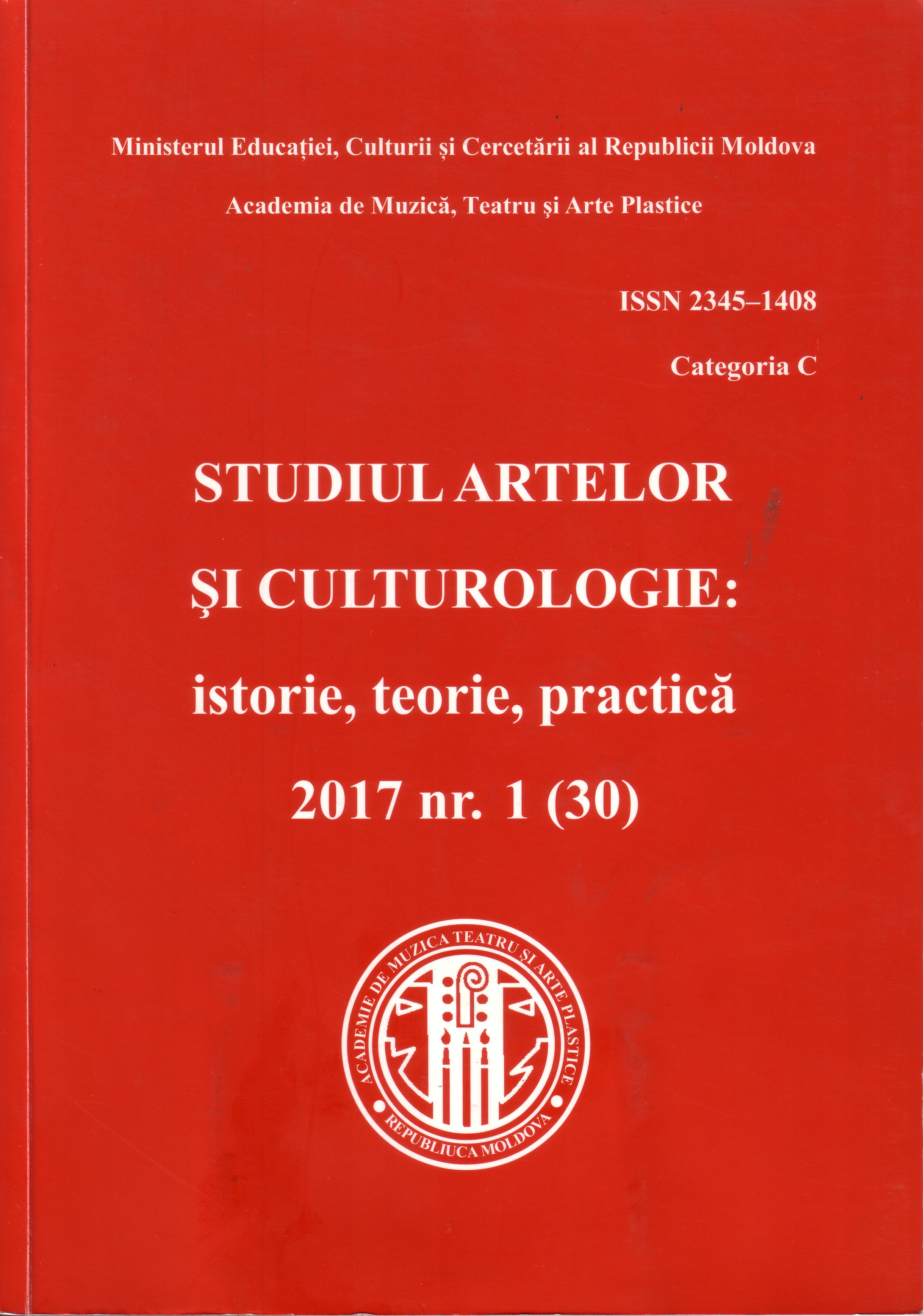CAPRICCIO PENTRU TROMPETĂ ŞI PIAN DE BORIS DUBOSARSCHI — O MOSTRĂ DE NEOFOLCLORISM ÎN CREAȚIA COMPONISTICĂ AUTOHTONĂ
CAPRICCIO FOR TRUMPET AND PIANO BY BORIS DUBOSARSCHI — A SAMPLE OF NEOFOLKLORISM IN NATIVE COMPOSITION CREATION
Author(s): Sergiu Cârstea, Victoria MelnicSubject(s): Music
Published by: Academia de Muzică, Teatru și Arte Plastice
Keywords: B. Dubosarschi; monopartite form; neofolklorism; trumpet repertoire;
Summary/Abstract: Boris Dubosarschi is the author of many works of various genres. Among the most representative ones are: the symphonic poem for symphony orchestra, voice and dulcimer ”In Memory of Mihai Eminescu”, the Overture for Symphony Orchestra, the cycle ”Four Pieces for String Orchestra”, several concertos for different instruments and orchestra, four string quartets, The Quintet for clarinet and string quartet as well a other works for various chamber groups, numerous pieces for different instruments and piano, etc. The ”Capriccio” for Trumpet and Piano (also available with chamber orchestra accompaniment), written by B. Dubosarschi in 1982, is part of this last category. The piece differs from other trumpet miniatures by a considerable extension of the ambitus, by the use of polyrhythm, yet remaining in the captivity of the traditional "folkloric" melodic line of the instrument solo. The dialogue between the trumpet solo and piano (or orchestra) is very well balanced, which speaks of the author as an excellent orchestrator and a good connoisseur of the possibilities of the instrument solo. The work is distinguished by its originality, due largely to the thematic material inspired by folklore, which distinguishes it from other pieces of its kind. The monopartite construction of the ”Capriccio” denotes elements of suite or rhapsody, in which the author uses the neo-classical compositional language characteristic of many Moldovan composers from the 1980 s. Combining several contrasting compartments, the composer manages to emphasize the sonority of the trumpet in different tonalities and, on the other hand, to give dynamism to the musical discourse using polymetry elements throughout the work. The thematic material is a mixture of Moldovan and Jewish folk music.
Journal: Studiul artelor și culturologie: istorie, teorie, practică
- Issue Year: 2017
- Issue No: 1(30)
- Page Range: 71-76
- Page Count: 6
- Language: Romanian

